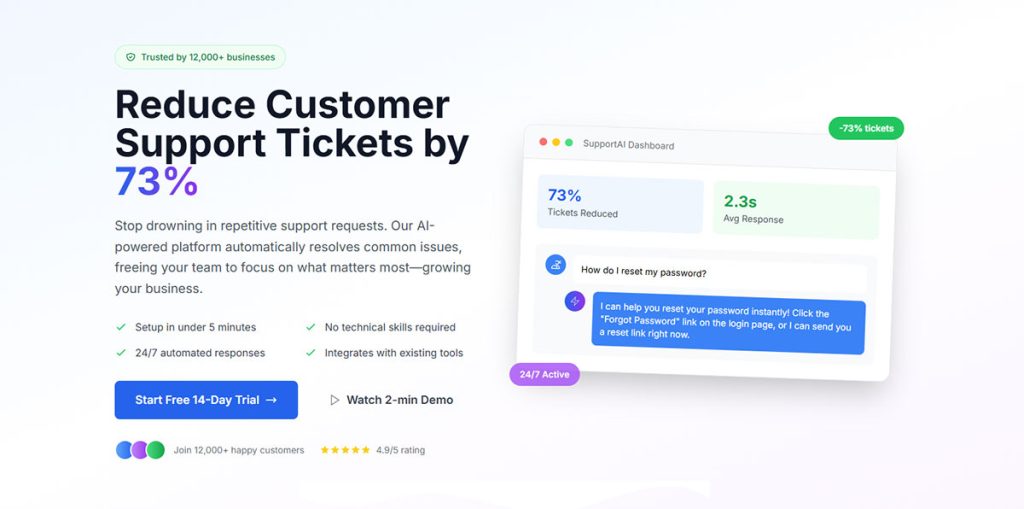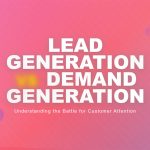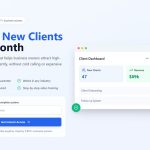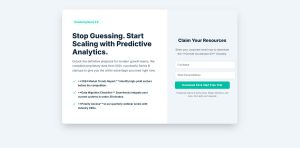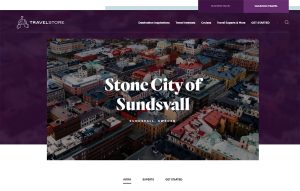Your website probably loses more subscribers than it gains. That’s the reality when your email signup sits ignored in the footer or buried on a contact page somewhere. Opt-in form…
Table of Contents
Most businesses struggle to convert website visitors into paying customers. A lead generation funnel solves this problem by systematically guiding prospects through each stage of the buying process.
Understanding what is a lead generation funnel becomes critical when you realize that only 2-3% of website visitors buy on their first visit. The remaining 97% need nurturing through strategic touchpoints that build trust and demonstrate value.
This guide reveals how marketing automation and customer relationship management systems work together to create predictable revenue growth. You’ll discover the three core funnel stages, proven types of forms that capture qualified leads, and metrics that matter for conversion optimization.
By the end, you’ll know:
- How to structure effective sales funnels
- Which lead magnets attract your ideal prospects
- Tools needed for marketing qualified leads
- Strategies that reduce customer acquisition costs
What Is A Lead Generation Funnel?
A lead generation funnel is a marketing strategy that guides potential customers through steps to capture their interest and convert them into leads. It typically includes awareness, interest, consideration, and conversion stages, using content, forms, and calls-to-action to collect contact information for future sales efforts.
The Different Stages of a Lead Generation Funnel
Every successful lead generation strategy follows a predictable path. Understanding these stages helps you create content that moves prospects closer to becoming customers.
Top of Funnel – Awareness Stage
Cold prospects don’t know you exist yet.
Your primary goal here is visibility. Create content that solves immediate problems without asking for anything in return.
The Power of Educational Content
Educational content builds trust and drives results:
- 131% higher purchase likelihood – Customers are more likely to buy from brands that provide educational content
- 6x higher conversion rates – Businesses with content marketing see dramatically better results
- 83% trust brands that offer helpful resources throughout the purchase cycle
Blog Posts: Your Awareness Engine
Blog posts work well because they answer specific questions your audience asks Google:
- 68% of online experiences begin with a search engine
- 55% more traffic is generated by high-quality blog content for B2B companies
- 165% lead growth for businesses that blog vs. non-blogging companies
Multi-Channel Distribution
Organic Search (The Foundation) Search engine optimization brings organic traffic to your website:
- 53% of website traffic comes from organic search
- 75% of users never scroll past the first page of search results
Social Media & Paid Advertising Social media platforms like LinkedIn and Facebook help spread your message. Paid advertising on Google Ads or social platforms accelerates awareness when you need faster results.
The Trust-First Approach
The key is providing value first. Educational content builds trust faster than promotional materials. Value-first content positions you as an expert, not just another vendor, creating the foundation for long-term customer relationships.
Middle of Funnel – Interest and Consideration
Now prospects know about you, but they need more convincing.
This stage focuses on lead capture and nurturing. Lead capture forms collect contact information in exchange for valuable resources.
Lead Capture Effectiveness
Lead capture forms are essential for converting visitors:
- 84% of marketers use form submissions to convert site visitors into sales-ready leads
- Average landing page conversion rate is 6.6% across all industries
- Professional services achieve the highest conversion rates at 9.3%
- Multi-step forms can increase conversions by up to 300%
Lead Magnets That Work
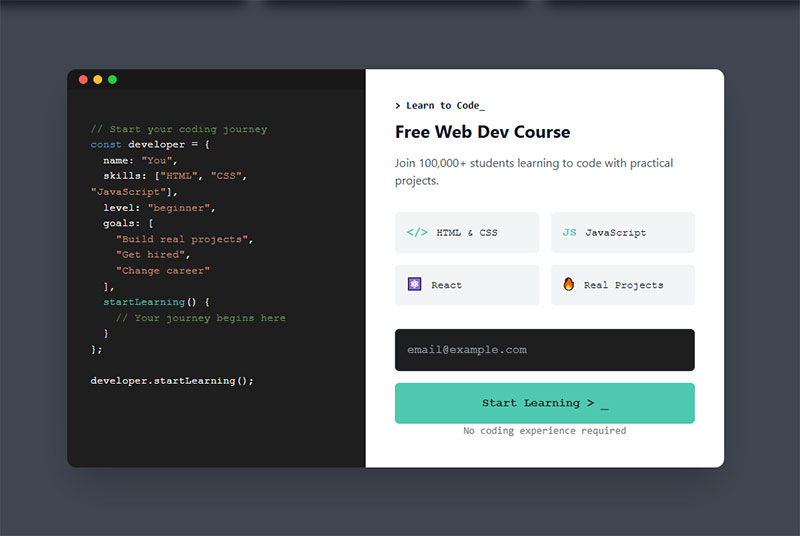
Free guides, checklists, and templates work as effective lead magnets:
- 47% of marketers find text-based and video lead magnets as top performers
- Webinars create the most high-quality leads according to 53% of marketers
- Guide books and e-books are the highest converting lead magnets in text formats
- Companies can see 60% increase in conversion rates by hosting webinars
Email Marketing & Automation
Email marketing campaigns become crucial here. Marketing automation platforms help you:
- Send welcome sequences automatically
- Score leads based on engagement
- Segment audiences for targeted messaging
- Track prospect behavior across touchpoints
Key email statistics:
- 69% of marketers use email as their #1 channel during lead nurturing
- Segmented email campaigns drive 30% more opens and 50% higher click rates
- Lead nurturing emails get 4-10x more responses than standalone email blasts
- 80% of marketers using automation software generate more leads
Marketing Automation Benefits
Automation transforms your nurturing efforts:
- 451% increase in qualified leads for businesses using automation to nurture prospects
- 77% more leads convert when using automation tools
- 91% of users agree marketing automation is crucial for multi-channel success
- 80% of marketers say automation software improves lead nurturing performance
Content That Converts
Your content gets more detailed and specific. Case studies, comparison guides, and how-to tutorials demonstrate your expertise without being pushy:
Case Study Power:
- 73% of B2B buyers find case studies the most influential content when making purchasing decisions
- 77% of B2B buyers consume case studies as part of their research
- Companies using case studies effectively can see up to 73% increase in conversion rates
- 82% of B2B marketers say case studies are effective at building trust
Lead Quality Metrics:
- Only 25% of leads are legitimate and should advance to sales
- 47% larger purchases are made by nurtured leads vs. non-nurtured leads
- 31% average lead-to-MQL conversion rate across all industries
The key at this stage is providing targeted, valuable content that builds trust while capturing and scoring leads for future nurturing campaigns.
Bottom of Funnel – Decision and Action
Qualified prospects are ready to buy, but they need final reassurance.
Sales qualified leads receive different treatment than marketing qualified leads. Your sales team takes over with personalized outreach and consultations.
Sales Performance Metrics
The transition from marketing to sales is critical:
- Average sales close rate is 29% across industries
- Only 27% of B2B leads are sales-ready when first generated
- Lead-to-customer conversion rates typically range from 2-5% for most industries
- Professional services achieve the highest conversion rates at 4.6%
Key Sales Activities
Discovery Calls & Consultations:
- 80% of successful sales require five or more follow-up calls after the initial meeting
- Contacting leads within 1 hour increases likelihood of conversion by 7 times
- 6-10 minute calls convert at higher rates (29%) than longer calls (22%)
- 93% of converted leads are reached by the 6th call attempt
Product Demonstrations:
- Product demos lasting 9 minutes or less maintain prospect interest most effectively
- 58% of prospects want to know pricing on the first call
- 54% want a product demo during initial conversations
- Free trials are most effective for conversions among prospects offered free options (50%)
Proposal & Closing Process:
- Understanding prospect’s needs and goals is the most effective closing strategy (31% of sales reps)
- Personalized calls have 202% higher conversion rates than generic outreach
- 42% of B2B sales pros say researching a prospect’s company challenges is most effective for closing
Conversion Optimization Impact
Small improvements in closing rates dramatically impact revenue growth:
- Companies using CRM systems see average sales increases of 29%
- Sales productivity improves by 34% with proper CRM implementation
- Sales forecasting accuracy increases by 42% with CRM tools
- Sales cycles can be reduced by 8-14% through effective CRM usage
Critical Success Factors
Timing & Persistence:
- Best calling times: Wednesdays/Thursdays 4-6 PM (164% higher qualification rate)
- Morning calls (9-10 AM) have 45% higher success rates
- 60% of customers say “no” four times before saying “yes”
- 92% of salespeople give up after the 4th call, missing conversion opportunities
Relationship Building:
- 36% higher customer retention and 38% higher win rates for companies with aligned sales and marketing teams
- 66.5% of sales reps cite customer referrals as producing the highest quality leads
- Top-performing reps use collaborative language (“we,” “us,” “our”) 10x more often
CRM System Benefits
Customer relationship management systems help sales teams stay organized and follow up consistently:
- 94% of businesses report increased sales productivity after CRM adoption
- 65% of sales reps with mobile CRM access achieve their annual quotas vs. 22% without
- Companies are 81% more likely to exceed goals when using CRM systems consistently
- Average ROI of $8.71 for every dollar invested in CRM software
Track Key Metrics:
- Lead-to-customer conversion rates
- Average deal size
- Sales cycle length
- Win/loss ratios by source
The bottom line: At this critical stage, persistence, personalization, and systematic follow-up separate successful sales teams from the rest. Every interaction should build toward the final commitment while addressing remaining objections and concerns.
Types of Lead Generation Funnels
Different businesses need different approaches. Your industry, audience, and goals determine which funnel type works best.
Content-Based Funnels
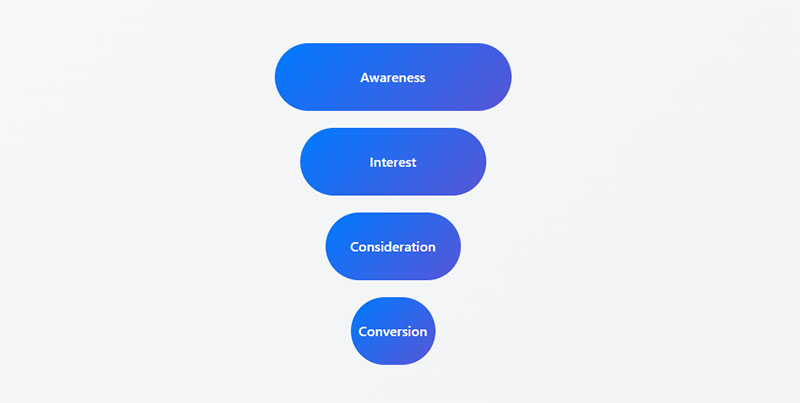
Perfect for service-based businesses and consultants.
Blog content attracts organic search traffic over time. Articles targeting long-tail keywords bring highly qualified visitors who are actively seeking solutions.
Downloadable resources like ebooks and whitepapers capture contact form information. Visitors exchange their email addresses for valuable content they can’t find elsewhere.
Webinars and online workshops allow real-time interaction. Attendees ask questions and get immediate answers, building stronger relationships than static content.
Content funnel advantages:
- Lower customer acquisition costs
- Builds long-term brand authority
- Attracts inbound leads consistently
- Works well for complex B2B sales
Product-Focused Funnels

Ideal for SaaS companies and physical product businesses.
Free trials remove purchase risk. Prospects can test your software without commitment. Freemium models work similarly, offering basic features at no cost.
Product demos showcase functionality and benefits directly. Live demonstrations answer specific questions about implementation and results.
Limited-time offers create urgency. Discount codes and special pricing motivate faster decision-making among interested prospects.
Sample offers work well for physical products. Allowing customers to try before they buy reduces return rates and increases satisfaction.
Event and Community Funnels
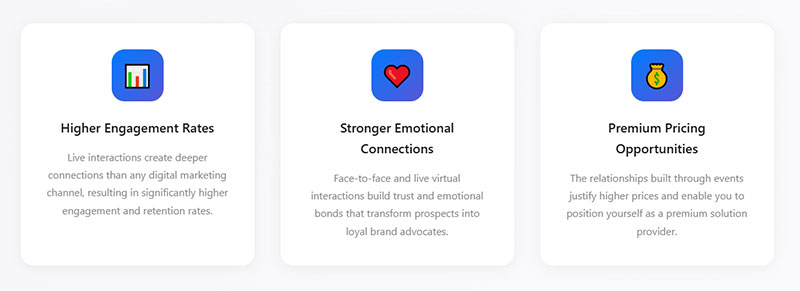
Great for building relationships and high-touch sales processes.
Workshop registration forms collect participant information before events. Live sessions allow direct interaction and relationship building.
Private Facebook groups or membership communities nurture leads over extended periods. Members share experiences and ask questions, creating valuable peer-to-peer education.
Networking events and industry conferences generate high-quality connections. Face-to-face meetings often accelerate sales cycles for expensive products or services.
Event funnel benefits:
- Higher engagement rates
- Stronger emotional connections
- Premium pricing opportunities
- Referral generation potential
Each funnel type requires different tools and strategies. Content funnels need robust CRM systems and email automation. Product funnels benefit from analytics platforms that track user behavior. Event funnels require WordPress event registration form capabilities and attendee management systems.
Success depends on matching your funnel type to your business model and customer preferences. Test different approaches to find what resonates with your specific audience.
How to Build Your First Lead Generation Funnel
Building an effective lead generation system requires strategic planning and careful execution. Start with your audience, then work backwards to create experiences that convert prospects into customers.
Identifying Your Target Audience
Know exactly who you’re trying to reach.
Create detailed buyer personas based on real customer data. Interview existing clients to understand their pain points, goals, and decision-making processes. Marketing qualified leads come from audiences that match your ideal customer profile.
Analyze demographics, job titles, company sizes, and industry verticals. B2B marketing strategies differ significantly from consumer approaches. Business development teams need different messaging than individual buyers.
Research where your prospects spend time online. LinkedIn works well for professional services. Facebook suits consumer products. Industry forums and communities often generate higher-quality leads than general platforms.
Creating Compelling Lead Magnets
Offer something valuable enough that prospects willingly share contact information.
Solve specific problems your audience faces daily. Free guides addressing common challenges perform better than generic resources. Educational content that saves time or money generates more downloads.
Effective lead magnet types:
- Checklists and templates
- Industry reports and data
- Video training series
- Tool recommendations
- Calculator tools
The key is making offers irresistible. Your lead magnet should provide immediate value while positioning your paid services as the logical next step.
Setting Up Landing Pages and Forms
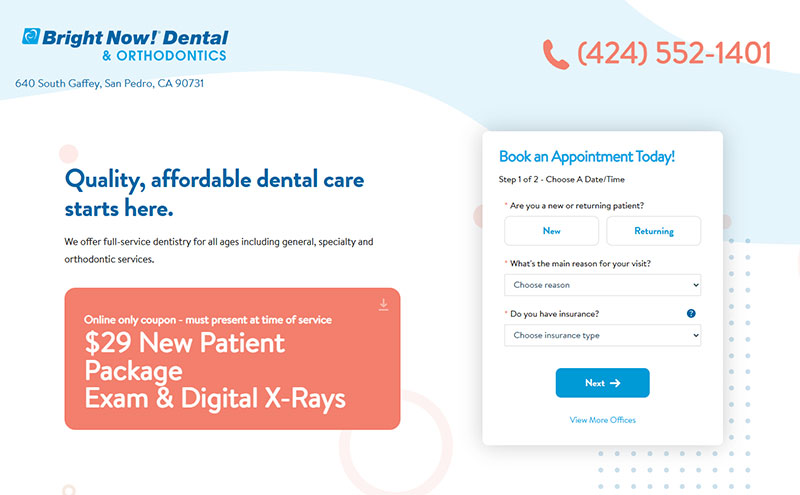
Image source: brightnow.com
Remove distractions and focus visitors on one clear action.
Write headlines that communicate specific benefits. “Get 50% More Leads in 30 Days” works better than “Download Our Guide.” Focus on outcomes, not features.
Landing page forms should collect only essential information. Name and email address suffice for initial capture. Additional fields can be added later through progressive profiling.
Design matters for conversion rates. Clean layouts guide visitors’ attention to your call-to-action. Remove navigation menus and other links that might distract from form completion.
Test different form lengths and field types. Multi-step forms often convert better than long single-page versions because they feel less overwhelming.
Building Email Follow-Up Sequences
Nurture leads systematically with automated email campaigns.
Welcome emails set expectations and deliver promised resources immediately. Include clear next steps and links to additional valuable content.
Drip campaigns build relationships over time. Share case studies, tips, and insights that demonstrate expertise without being promotional. Educational sequences work better than sales-heavy approaches.
Marketing automation workflows trigger based on subscriber behavior. Prospects who download multiple resources receive different messages than those who only engage occasionally.
Email sequence best practices:
- Personalize subject lines and content
- Provide value in every message
- Include clear calls-to-action
- Segment lists based on interests
- Monitor engagement metrics closely
Tools and Technology for Lead Generation Funnels
The right technology stack streamlines lead capture, nurturing, and conversion processes. Choose tools that integrate well and scale with your business growth.
Landing Page Builders and Website Tools
Create high-converting pages without technical expertise.

Popular platforms include Leadpages, Unbounce, and ClickFunnels. Each offers templates optimized for different industries and goals. Drag-and-drop editors make customization simple.
WordPress websites provide more flexibility but require additional plugins. WordPress forms handle lead capture while page builders like Elementor create professional designs.
Mobile responsiveness is critical. Over 60% of web traffic comes from mobile devices. Pages that don’t load quickly on phones lose potential conversions.
Consider loading speed optimization. Google Analytics shows bounce rates increase dramatically when pages take longer than three seconds to load. Compress images and minimize code to improve performance.
Email Marketing and Automation Platforms
Manage subscriber lists and automate follow-up sequences.
ConvertKit excels for content creators and coaches. Mailchimp suits small businesses with basic needs. ActiveCampaign provides advanced automation for complex sales processes.
Key features to evaluate:
- Automation workflow builders
- List segmentation capabilities
- A/B testing functionality
- Integration options
- Deliverability rates
- Reporting and analytics
Salesforce and HubSpot offer comprehensive CRM systems with built-in email marketing. These platforms work well for businesses needing complete customer lifecycle management.
Marketing automation platforms help score leads based on engagement levels. Prospects who open multiple emails and visit pricing pages receive higher scores than passive subscribers.
Analytics and Tracking Tools
Measure funnel performance and identify improvement opportunities.
Google Analytics tracks website visitors, traffic sources, and conversion goals. Set up custom events to monitor form submissions and email signups.
Conversion optimization tools like Hotjar show how visitors interact with your pages. Heatmaps reveal which elements attract attention and where people click most often.
Lead attribution software connects marketing activities to revenue outcomes. Understanding which channels generate the highest-value customers helps optimize marketing spend.
Essential metrics to track:
- Traffic sources and volume
- Landing page conversion rates
- Email open and click rates
- Cost per lead by channel
- Lead-to-customer conversion rates
- Customer lifetime value
Split testing platforms allow systematic experimentation. Test headlines, form designs, and email subject lines to continuously improve results.
Customer relationship management systems centralize prospect data and interaction history. Sales teams need visibility into marketing activities to have informed conversations with qualified leads.
Integration capabilities matter significantly. Tools that don’t communicate create data silos and manual work. Choose platforms with robust API connections or native integrations with your existing software stack.
Best Practices for Lead Generation Funnels
Success comes from testing, measuring, and refining every element. Small improvements compound over time to create significant results.
Writing Copy That Converts

Headlines determine whether visitors stay or leave immediately.
Focus on specific benefits rather than generic features. “Reduce Customer Support Tickets by 40%” beats “Improve Your Customer Service.” Numbers add credibility and set clear expectations.
Address pain points directly in your messaging. Sales qualified leads respond to content that acknowledges their specific challenges. B2B marketing strategies require different language than consumer approaches.
Strong calls-to-action use action words and create urgency. “Get Your Free Template Now” converts better than “Download Here.” Tell prospects exactly what happens when they click.
Effective copywriting elements:
- Problem-focused headlines
- Benefit-driven descriptions
- Social proof and testimonials
- Scarcity and urgency triggers
- Clear value propositions
Design Elements That Improve Results

Image source: slite.com
Visual hierarchy guides attention to conversion points.
Clean layouts reduce cognitive load. Remove unnecessary elements that distract from your primary goal. Form design impacts completion rates significantly.
Trust signals build confidence among skeptical prospects. Customer logos, security badges, and money-back guarantees address common objections before they arise.
Mobile forms require special attention. Fingers are less precise than mouse cursors. Larger buttons and simplified layouts improve mobile conversion rates.
Color psychology influences decision-making. Red buttons often outperform blue ones for urgent actions. Test different combinations to find what works for your audience.
Testing and Improving Your Funnel
Data beats opinions when optimizing conversion rates.
A/B testing reveals which elements impact performance most. Test headlines, form lengths, button colors, and page layouts systematically. Change one element at a time to isolate variables.
Analytics tools like Google Analytics show where prospects drop off. High bounce rates indicate messaging mismatches. Low conversion rates suggest weak offers or confusing designs.
Key optimization opportunities:
- Landing page headlines
- Lead magnet offers
- Form field requirements
- Email subject lines
- Call-to-action buttons
Customer acquisition cost calculations help prioritize improvements. Focus on changes that reduce cost per lead while maintaining lead quality.
Common Mistakes to Avoid
Learning from others’ failures saves time and money. These mistakes appear in most unsuccessful funnels.
Technical Setup Problems
Broken systems frustrate prospects and waste marketing spend.
Test every link and form before launching campaigns. Form validation prevents incomplete submissions and user frustration. Broken contact us pages lose qualified prospects permanently.
Email deliverability issues prevent follow-up sequences from reaching subscribers. Monitor spam folder placement and sender reputation scores. Authentication protocols like SPF and DKIM improve inbox delivery rates.
WordPress email settings often cause delivery problems. Use dedicated email services instead of hosting provider mail servers for better reliability.
Technical checklist:
- Form submission confirmations work
- Email automation triggers properly
- Landing pages load quickly
- Mobile responsiveness functions
- Analytics tracking fires correctly
Content and Messaging Issues
Generic content fails to attract qualified prospects.
Weak lead magnets generate low-quality subscribers. “Ultimate Guides” and generic templates don’t solve specific problems. Create resources that address urgent, painful challenges your audience faces daily.
Too much selling too early repels interested prospects. Educational content builds trust faster than promotional messages. Lead nurturing requires patience and value-first approaches.
Form UX design mistakes reduce completion rates. Long forms with unnecessary fields create abandonment. Progressive profiling collects additional information over time instead of overwhelming initial visitors.
Inconsistent messaging across touchpoints confuses prospects. Social media posts, landing pages, and email sequences should use similar language and value propositions.
Traffic and Promotion Mistakes
Quality matters more than quantity for lead generation.
Targeting the wrong audience wastes advertising budgets. Broad demographics generate clicks but few conversions. Narrow targeting costs more per click but produces better results.
Insufficient traffic volume prevents meaningful testing. Small sample sizes make statistical significance impossible. Scale traffic before optimizing conversion elements.
Traffic quality indicators:
- Time spent on landing pages
- Pages viewed per session
- Email engagement rates
- Lead-to-customer conversion rates
- Customer lifetime value
Marketing automation workflows need regular maintenance. Outdated content and broken links damage sender reputation. Review sequences quarterly to ensure relevance and accuracy.
Improving form abandonment rate requires understanding why prospects leave. Exit-intent surveys reveal common objections and hesitations.
Single-channel dependence creates vulnerability. Diversify traffic sources to reduce risk. Organic search, social media, email marketing, and paid advertising should all contribute to funnel performance.
Poor follow-up timing kills momentum. Immediate responses to form submissions maintain engagement. Delayed contact allows competitors to capture attention instead.
Measuring Success and Key Metrics
Tracking the right metrics reveals funnel performance and optimization opportunities. Focus on numbers that directly impact revenue growth.
Traffic and Conversion Metrics
Website visitors tell only part of the story.
Monitor traffic sources to understand which channels generate qualified prospects. Organic search often produces higher-quality leads than social media traffic. Paid advertising provides immediate volume but costs more per visitor.
Landing page conversion rates vary significantly by industry and offer type. B2B services typically see 2-5% conversion rates. Consumer products often achieve 10-15% with compelling offers.
Cost per lead calculations help allocate marketing budgets effectively. Google Ads might cost $50 per lead while LinkedIn generates leads at $150 each. Higher costs can justify themselves through better lead quality.
Essential traffic metrics:
- Unique visitors by source
- Bounce rates on key pages
- Form completion rates
- Cost per acquisition
- Traffic-to-lead conversion percentage
Web forms with poor design dramatically reduce conversion rates. Small changes like reducing required fields or improving placeholder text can double completion rates.
Customer acquisition cost depends on funnel efficiency. Marketing automation platforms like HubSpot and Salesforce track prospects through multiple touchpoints to calculate true acquisition costs.
Email Performance Indicators
Email engagement predicts sales success.
Open rates show subject line effectiveness and sender reputation health. Industry averages range from 15-25%, but quality matters more than benchmarks. Engaged subscribers convert better than large, unresponsive lists.
Click-through rates indicate content relevance and call-to-action strength. Rates below 2% suggest messaging problems or audience mismatches. Segmented campaigns often achieve 5-8% click rates.
List growth velocity measures funnel health over time. Steady subscriber increases indicate effective lead magnets and traffic generation. Declining growth signals content or targeting issues.
Key email metrics:
- Open rates by campaign type
- Click-through rates on different content
- Unsubscribe rates and list churn
- Email-to-lead conversion rates
- Deliverability and spam scores
Subscription forms positioned strategically throughout websites capture more email addresses. Exit-intent popups recover abandoning visitors while inline forms engage active readers.
Marketing qualified leads require different nurturing than casual subscribers. Lead scoring algorithms assign points based on email engagement, website behavior, and demographic information.
Sales and Revenue Tracking
Revenue metrics determine funnel success.
Lead-to-customer conversion rates vary by sales process complexity. Simple product sales might convert 20-30% of qualified leads. Enterprise software sales often see 5-10% conversion rates over longer cycles.
Average deal size impacts overall return on investment calculations. Funnels generating smaller deals need higher conversion rates to remain profitable. Customer relationship management systems track deal progression and closure rates.
Revenue tracking essentials:
- Monthly recurring revenue growth
- Customer lifetime value trends
- Sales cycle length changes
- Win rates by lead source
- Revenue attribution by marketing channel
Sign up forms for free trials provide immediate conversion opportunities. Product-focused funnels benefit from tracking trial-to-paid conversion rates and usage metrics.
Return on investment calculations justify marketing spend and guide budget allocation. Channels producing positive ROI deserve increased investment. Underperforming sources need optimization or elimination.
Sales enablement tools help convert marketing qualified leads into sales qualified leads. CRM integration ensures smooth handoffs between marketing and sales teams.
Customer acquisition funnels require ongoing optimization based on performance data. A/B testing different offers, messaging, and designs improves conversion rates over time.
Lead attribution software connects marketing activities to closed deals. Understanding which touchpoints influence purchase decisions helps optimize customer journey experiences.
FAQ on What Is A Lead Generation Funnel
What is a lead generation funnel exactly?
A systematic process that converts prospects into customers through strategic stages. Marketing automation guides visitors from awareness to purchase using targeted content, email sequences, and lead generation form optimization to nurture relationships and increase conversion rates.
How does a sales funnel differ from lead generation?
Sales funnels focus on closing deals with qualified prospects. Lead generation funnels capture and nurture cold traffic first. Both work together – lead generation creates marketing qualified leads, then sales funnels convert them into customers through direct sales conversations.
What are the main stages of a lead funnel?
Top of funnel attracts visitors through content and SEO. Middle of funnel captures contact information with lead magnets. Bottom of funnel qualifies prospects for sales conversations. Each stage requires different messaging and conversion optimization strategies.
How long should a lead generation funnel be?
Funnel length depends on purchase complexity and price points. Simple products need 3-5 touchpoints. B2B services require 7-12 interactions over weeks or months. Customer relationship management systems track engagement to determine optimal sequence length and timing.
What tools do I need for lead funnels?
Essential tools include landing page builders, email marketing platforms like ConvertKit or Mailchimp, CRM systems, and analytics software. WordPress lead generation plugins simplify setup for website-based funnels. Choose integrated platforms to avoid data silos.
How much does building a funnel cost?
Basic funnels cost $100-500 monthly for tools and hosting. Advanced setups with premium platforms like HubSpot or Salesforce range $1,000-5,000 monthly. Factor in content creation, advertising spend, and potential agency fees for comprehensive customer acquisition strategies.
What conversion rates should I expect?
Landing pages typically convert 2-5% of visitors. Email sequences achieve 15-25% open rates and 2-5% click rates. Lead-to-customer conversion varies by industry – B2B services see 5-15% while ecommerce achieves 1-3%. Track cost per lead across channels.
How do I measure funnel success?
Monitor traffic sources, conversion rates at each stage, email engagement metrics, and customer acquisition costs. Revenue attribution shows which marketing channels generate profitable customers. Use Google Analytics and CRM reporting to track prospect journey and optimize weak points.
What makes a good lead magnet?
Effective lead magnets solve specific problems immediately. Free guides, templates, calculators, and survey form tools work well. Value must exceed the perceived cost of sharing contact information. Target urgent pain points your audience faces daily.
How often should I update my funnel?
Review performance monthly and test improvements quarterly. Update content seasonally or when industry changes occur. Major funnel rebuilds happen annually. Continuous A/B testing of headlines, offers, and form accessibility features ensures optimal performance over time.
Conclusion
Understanding what is a lead generation funnel empowers businesses to create predictable revenue streams through systematic prospect nurturing. These frameworks transform random website visitors into qualified opportunities using strategic content and marketing automation workflows.
Success depends on three critical elements:
- Compelling lead magnets that solve urgent problems
- Effective email sequences that build trust over time
- Optimized popup forms that capture contact information
Revenue growth accelerates when you implement conditional logic in your capture process and track lead scoring metrics consistently. Sales enablement improves as marketing qualified leads receive proper nurturing before sales conversations begin.
The most successful funnels integrate seamlessly with CRM systems and provide detailed analytics on customer acquisition costs. Start with simple three-stage frameworks, then expand based on performance data and prospect feedback to maximize your marketing ROI.


